How overdose treatments and syringe exchanges have saved hundreds of lives in SLO County
Editor’s note: This is the second of a two-part series examining how SLO County has been impacted by the national fentanyl crisis. The first part of the series looks at how fentanyl and other synthetic opioids led to a spike in drug-related deaths. Read it here.
Jenn Bartenetti first visited the SLO Bangers syringe exchange and overdose prevention program about six years ago to retrieve sterile needles and replenish her supply of naloxone after it was stolen.
The San Luis Obispo-based nonprofit organization taught her how to use the medication — also known as Narcan — to reverse the effects of an opioid overdose.
Bartenetti soon got her first chance to put her training into practice. A man in the Morro Bay homeless community where she was living at the time overdosed on opioids.
By the time Bartenetti got to the scene, he was rigid and turning blue, but he had a faint heartbeat. She injected him with Naxolone; it also took 45 minutes of rescue breathing by three people and four doses of intranasal naloxone to restore his breathing and bring him back to consciousness.
Bartenetti estimates that she’s saved at least 60 lives by reversing drug overdoses.
And that’s just one person. Countywide, similar efforts have saved hundreds of lives in recent years.
“When you’re constantly in the trenches saving people’s lives ... that becomes who you are,” said Bartenetti, who functions essentially as a first responder and frontline health worker. “That becomes the most important.”
In addition to carrying naloxone, she helps prevent infectious diseases by offering routine HIV and hepatitis C testing and exchanging needles at SLO Bangers on behalf of people in her community who use drugs.
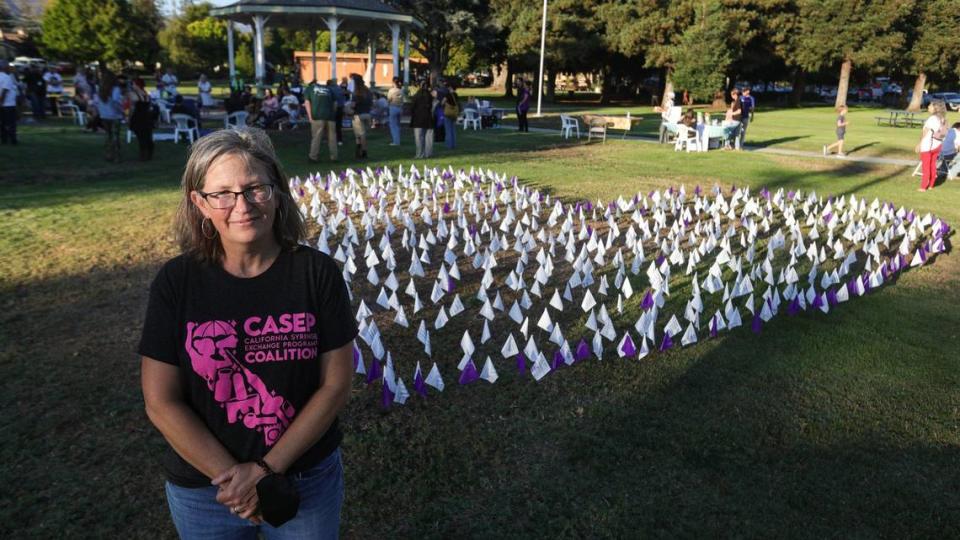
San Luis Obispo County grapples with evolving opioid crisis
Since early 2019, San Luis Obispo County has had a higher rate of drug-related deaths than the state of California as a whole.
In particular, the county has had a higher rate of opioid-related overdose deaths than the state since early 2020.
“Our overdose rates for any opioid but then also for fentanyl are still higher than the state’s rates,” San Luis Obispo County Opioid Safety Coalition Coordinator Jenn Rhoads said. “But everywhere across the state is seeing increases.”
The increase in opioid-related overdose deaths is due in part to a nationwide rise of drugs tainted with fentanyl and other synthetic opioids.
The fentanyl problem has become so severe that President Joe Biden named it a top priority in his Feb. 7 State of the Union address.
The Biden administration announced plans to scale up the distribution of naloxone, with $50 million going to local public health departments to purchase the medication.
Local harm reduction organizations such as SLO Bangers and the SLO County Opioid Safety Coalition, which is part of the San Luis Obispo County Behavioral Health Department, have been ahead of the federal government when it comes to prioritizing overdose prevention.
“These are people. Sons and daughters. People deserve to live. We’re giving them the chance to live,” said Candace Winstead, SLO Bangers program coordinator and grant manager.
Drugs tainted with fentanyl increase risk of overdose, death
Fentanyl is often hidden in other substances or pressed into pills designed to look like prescription drugs.
According to Bartenetti, the influx of synthetic opioids in non-opioid drugs means it’s no longer just users of street drugs who are at risk of a fatal overdose.
People who do not typically use opioids are more likely to experience overdoses when unknowingly exposed to fentanyl — and less likely to know how to protect against it, Bartenetti said.
Health and law enforcement agencies warn that the drug supply in the United States is tainted to the point that anyone who uses illicit drugs obtained without a prescription risks inadvertently taking a lethal dose of opioids.
“The harm reduction community has acknowledged and has been at the forefront of recognizing the crisis that we’re in right now,” Winstead said. “And so, so much earlier than established public health departments.”
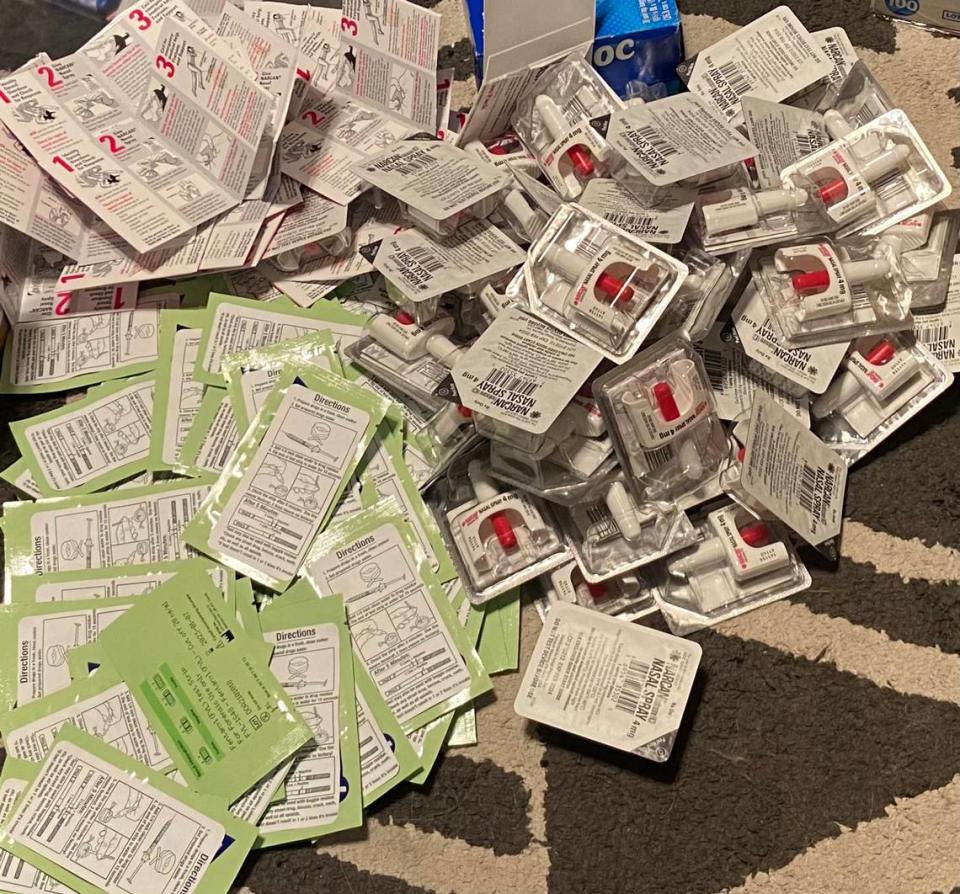
History of syringe exchange programs in SLO County
To best reach people at risk, harm-reduction programs aim to minimize the stigma around drug use, policies and laws.
“Harm reduction as a philosophy is meeting people where they’re at in a really practical way,” said Winstead, who is also a Cal Poly biological sciences professor.
At SLO Bangers, harm reduction means asking people who seek their healthcare services what they need, without judgment.
“Harm-reduction approaches are really low-barrier,” Winstead said, “meeting people’s unique needs and really trying to be tailored to each individual person.”
More California communities started adopting harm-reduction strategies such as syringe and needle exchanges at the height of the HIV/AIDS epidemic in the 1980s and ‘90s once it became clear that use of contaminated needles among intravenous drug users was contributing to the spread of infectious diseases.
It wasn’t until the passage of California State Assembly Bill 547 in 2005 that local governments could authorize syringe exchange programs without declaring a local state of emergency.
In 2015, the state Legislature went a step further to support harm-reduction organizations by passing State Senate Bill 75. The bill authorized the California Department of Public Health Office of AIDS to set up a syringe exchange supply clearinghouse to distribute a baseline supply of harm-reduction materials to authorized programs in the state.
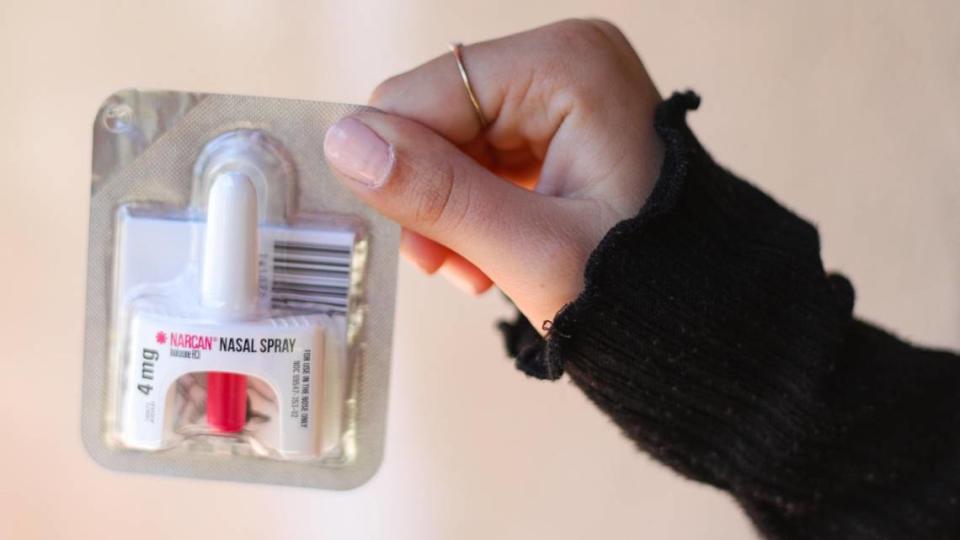
Some of the approved materials distributed through the clearinghouse to harm-reduction organizations include sterile syringes, naloxone, alcohol wipes, glass pipes, fentanyl test strips and condoms.
SLO Bangers started as a syringe exchange program in 2007 after the San Luis Obispo County Board of Supervisors voted unanimously to authorize such a program in the county. The name “SLO Bangers” is derived from an older term for people who inject drugs. The nonprofit does not have a headquarters but borrows space throughout SLO County for weekly meetings with the community.
“As time goes on, we become more and more aware of what our folks need and more and more aware of changes in the harm reduction community and in the drug community,” said SLO Bangers founder Lois Petty, who worked in HIV/AIDS prevention services and as a hepatitis C counselor before starting the community-based organization. “Over the years we’ve really, really changed.”
In addition to syringe exchange, SLO Bangers now offers a wide variety of services designed to help drug users avoid health problems related to their substance use and prevent overdose deaths.
One example is the addition of naloxone training, which has become vital in preventing deaths caused by opioid overdoses.
SLO Bangers was the first organization to distribute fentanyl test strips in SLO County, Winstead said. The strips can be used to test drugs to see if they contain the highly potent synthetic opioid.
During the COVID-19 pandemic, SLO Bangers pivoted to doing more in-person outreach through trained participants instead of requiring participants to get to their meeting site.
Now, SLO Bangers volunteers and staffers function almost as program satellites to reach people who may not otherwise have access to its services, Winstead said.
“We’ve gone out in the community a lot more and we’re doing more … boots-on-the-ground outreach,” Winstead said. “I think that’s been nothing but positive. It’s allowed us access to what other folks need.”
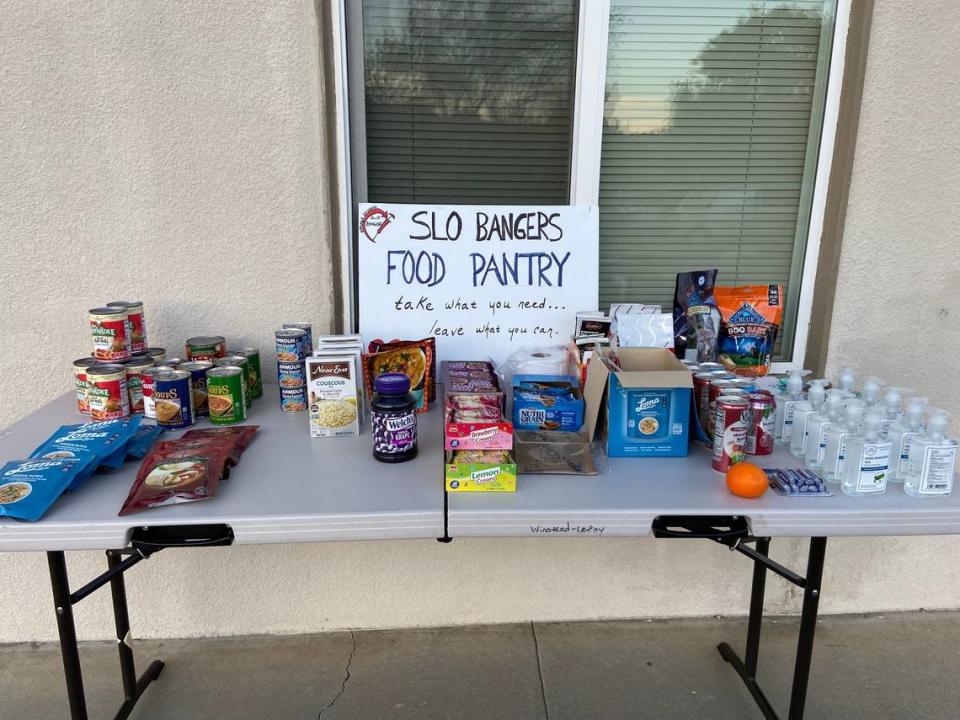
How harm reduction organizations save lives
The increase in drug- and opioid-related deaths in San Luis Obispo County has startled health experts and members of law enforcement, but the problem would be worse without the proliferation of life-saving supplies such as naloxone.
Data from the SLO County Coroner’s Office analyzed by the county’s Opioid Safety Coalition, which is part of the health agency, showed a 345% increase in the number of drug-related deaths here between 2017 and 2021.
The Coroner’s Office is still analyzing data on drug-related deaths from 2022, but Sheriff-Coroner Sgt. John McDaniel told The Tribune he anticipates a dip in the number of drug-related deaths in 2022 due in large part to the widespread distribution of naloxone.
“It would be much worse if we weren’t doing the work that we’re doing,” Winstead said.
In San Luis Obispo County, an estimated 1,000 people used SLO Bangers services between June 2021 and July 2022, according to the organization’s data.
Winstead said this number is likely an undercount, since it relies on self-reporting from participants.
The stigma attached to substance use disorder and drug use coupled with challenges such as mental illness and homelessness makes it more challenging for individuals who use drugs to access healthcare services.
Roughly half of all SLO Bangers participants in the past year reported housing insecurity, either living in an encampment, a car or a recreational vehicle, or staying with friends in temporary housing.
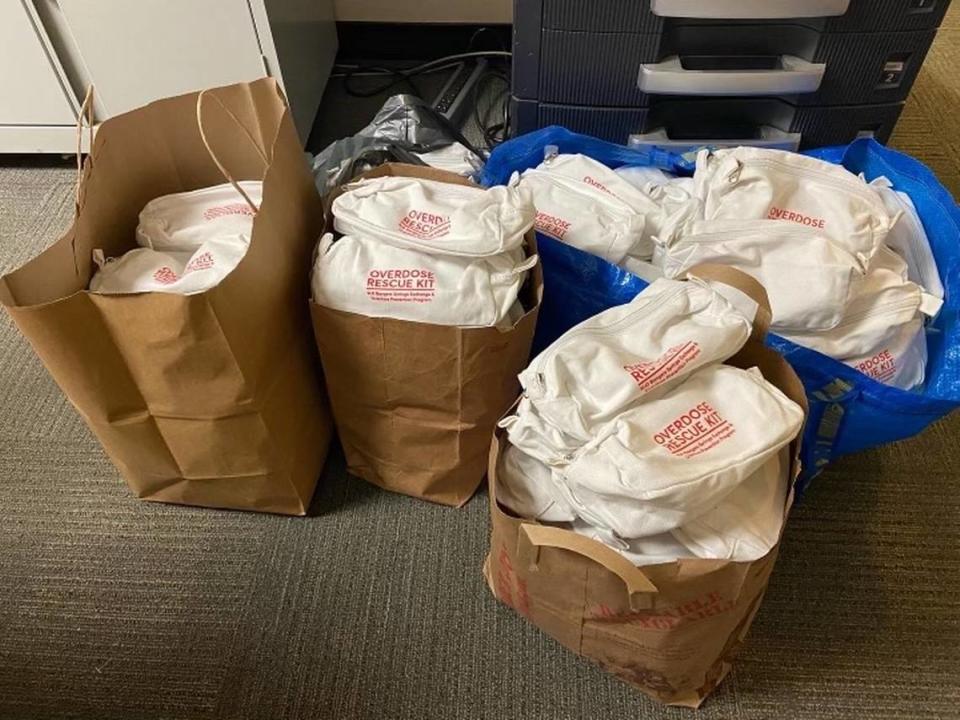
Petty said encampment sweeps in SLO County often displace SLO Bangers participants, making it more challenging for them to access services.
Community members who attend SLO Bangers syringe exchanges and naloxone trainings are often current drug users, people in various stages of recovery or people with loved ones or neighbors who use illicit substances.
“Those are our people and we love them and we want to take care of them and we want to make sure that they don’t die,” Winstead said.
The program is making a difference.
SLO Bangers participants reported witnessing at least 788 overdoses between July 2021 and June 2022. Of those overdoses, 680 were reversed, 59 were fatal and 49 had an unknown outcome.
Every overdose that was reversed by a SLO Bangers participant is considered a life saved, Winstead said.
During the same time period the organization conducted 769 naloxone trainings to help community members and participants reverse overdoses, and distributed 2,771 naloxone kits, representing a total of 6,264 doses of naloxone.
“We’re putting out a lot of Narcan, a lot more than we ever have in our program’s history,” Winstead said.
SLO County health agency works to get naloxone in every home
In January 2022, the SLO County Opioid Safety Coalition — a frequent partner of SLO Bangers — pushed local outreach even further by launching Naloxone Now, a web application that allows people to get the medication delivered directly to them.
“Overall we’ve gotten a really positive response from community members,” Rhoads said.

SLO Bangers and the Opioid Safety Coalition aim to dismantle any stigma surrounding naloxone.
Naloxone is a harmless substance for people who are exhibiting symptoms of an opioid overdose but may not actually be overdosing on opioids, Rhoads said.
“It’s not going to do anything to help that person, but it wouldn’t hurt them,” Rhoads explained. “They’d have a wet nose and that’s about it.”
The goal of Naloxone Now is to get naloxone in the medicine cabinets of every household in the county.
Data from the SLO County Opioid Safety Coalition shows 426 orders of naloxone were placed using the web application in 2022.
According to Rhoads, very few of those orders went to the same people each time.
Only about 12 of the orders through Naloxone Now went to a household that had previously ordered the medication, she said.
“That’s really encouraging in that every month we’re reaching new people. It’s a new household that’s gaining access to this lifesaving medication,” she said. “That was really the intention of Naloxone Now ... to make naloxone or Narcan a household name.”
Based on available data for the first eight months of 2022, an average of 38 lives were saved each month by reversing overdoses with naloxone in SLO County, according to data analyzed by the SLO County Opioid Safety Coalition.
“A lot of lives are being saved in a relatively easy, user-friendly medication,” Rhoads said.
For comparison, an average of around 10 people died in 2021 from drug-related overdoses each month in SLO County, Rhoads said.
There is no age requirement to access naloxone through the Naloxone Now web application, Rhoads said.
“My assumption is that if you’re old enough to go on the website and fill out the form, then you’re probably old enough to know how to use a nasal spray,” Rhoads said.
Needle exchange programs help people access recovery
The SLO Bangers philosophy is that recovery looks different for every individual and that abstinence from substances is not the only pathway to recovery.
First and foremost, “Somebody has to be alive in order to recover,” Winstead said.
Research shows that drug users who participate in syringe exchange programs are more likely to stop or reduce their drug use than those that do not participate.
The Centers for Disease Control and Prevention said people who inject drugs but also access a syringe services program are more than five times as likely to enter treatment for a substance use disorder and nearly three times as likely to report reducing or discontinuing injection drug use.
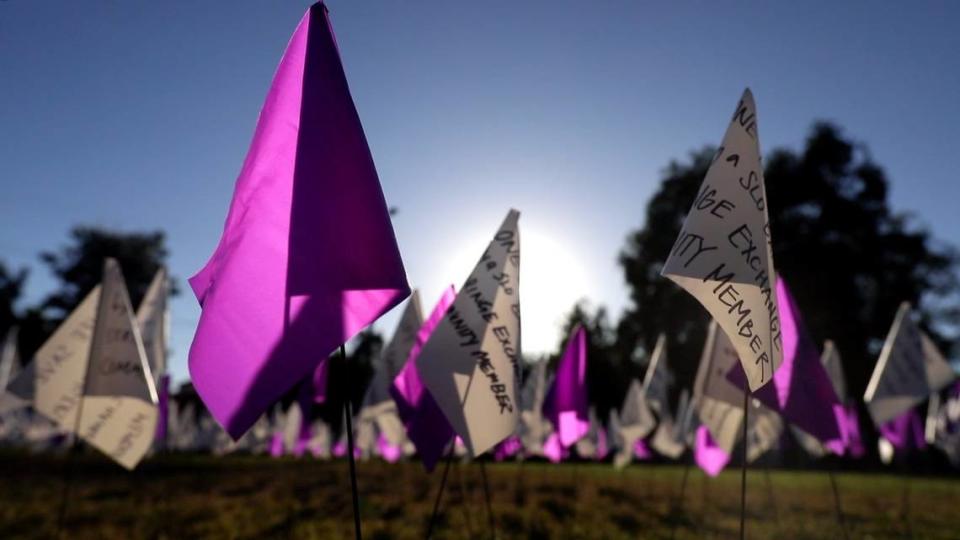
Programs such as SLO Bangers also provide referrals for medically assisted treatment.
The compassion health workers at SLO Bangers show for their participants is sometimes enough to help them adopt healthier habits, Winstead said.
“They’re interacting with people that care about them and that they can talk to about their drug use,” Winstead said.
She recalled a participant who told SLO Bangers he wanted to reduce his drug use. Every week, he brought in more syringes to the group than he would take home to try to reduce his drug use.
“It’s amazing to be able to be a part of that journey with people and to help them stay safe during it,” she said.
Where can I get naloxone, harm-reduction supplies in SLO County?
People looking to access harm-reduction supplies, naloxone training and medically assisted treatment have a few options in San Luis Obispo County.
Naloxone can be ordered and delivered directly for free using the Naloxone Now web application at naloxonenowslo.org.
Community members looking to exchange or access supplies and training on how to administer naloxone are welcome at SLO Bangers.
SLO Bangers is open from 2 to 4 p.m. Monday at 760 Main St. in Morro Bay; 4:30 to 5:30 p.m. Tuesday at ECHO Paso Robles, 1134 Black Oak Drive; 5:30 to 8:15 p.m. Wednesday at the Public Health Department, 2191 Johnson Ave. in San Luis Obispo; and 4 to 6 p.m. Sunday at ECHO, 63070 Atascadero Ave. in Atascadero.
One of the best ways to stay safe and reduce the risk of an opioid overdose is to never use alone, Petty advised.
“Don’t use alone. If you’re using around other people, have people stagger their use so somebody is always available to Narcan somebody if they’re overdosing,” Petty said.
The Never Use Alone hotline at 800-484-3731 is a vital resource for preventing death by overdose.
People who are looking to reduce or stop their drug use can access medically assisted treatment at a variety of healthcare centers in the county.
Medically assisted treatment uses medication combined with counseling and behavioral health therapies to treat opioid and alcohol use disorders. SLO County Drug and Alcohol Services offers medically assisted treatment for opioid use which is typically covered by Medi-Cal.
For more information, go to bit.ly/mat-sloco.

